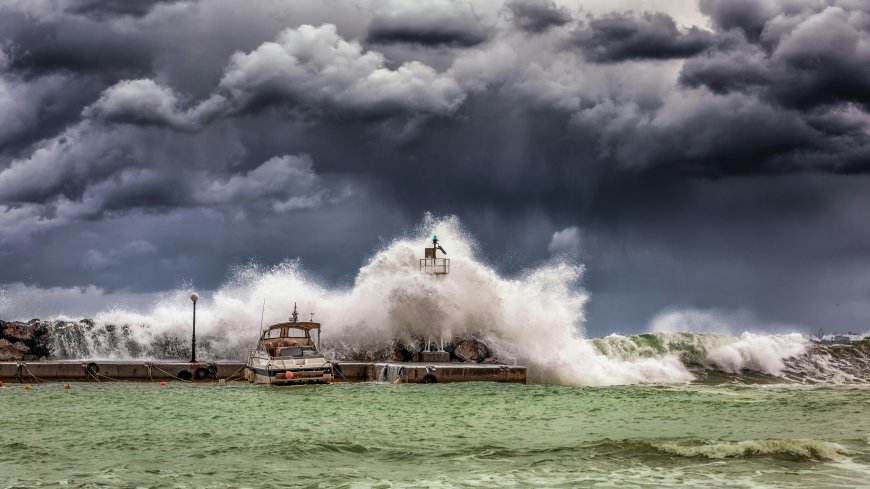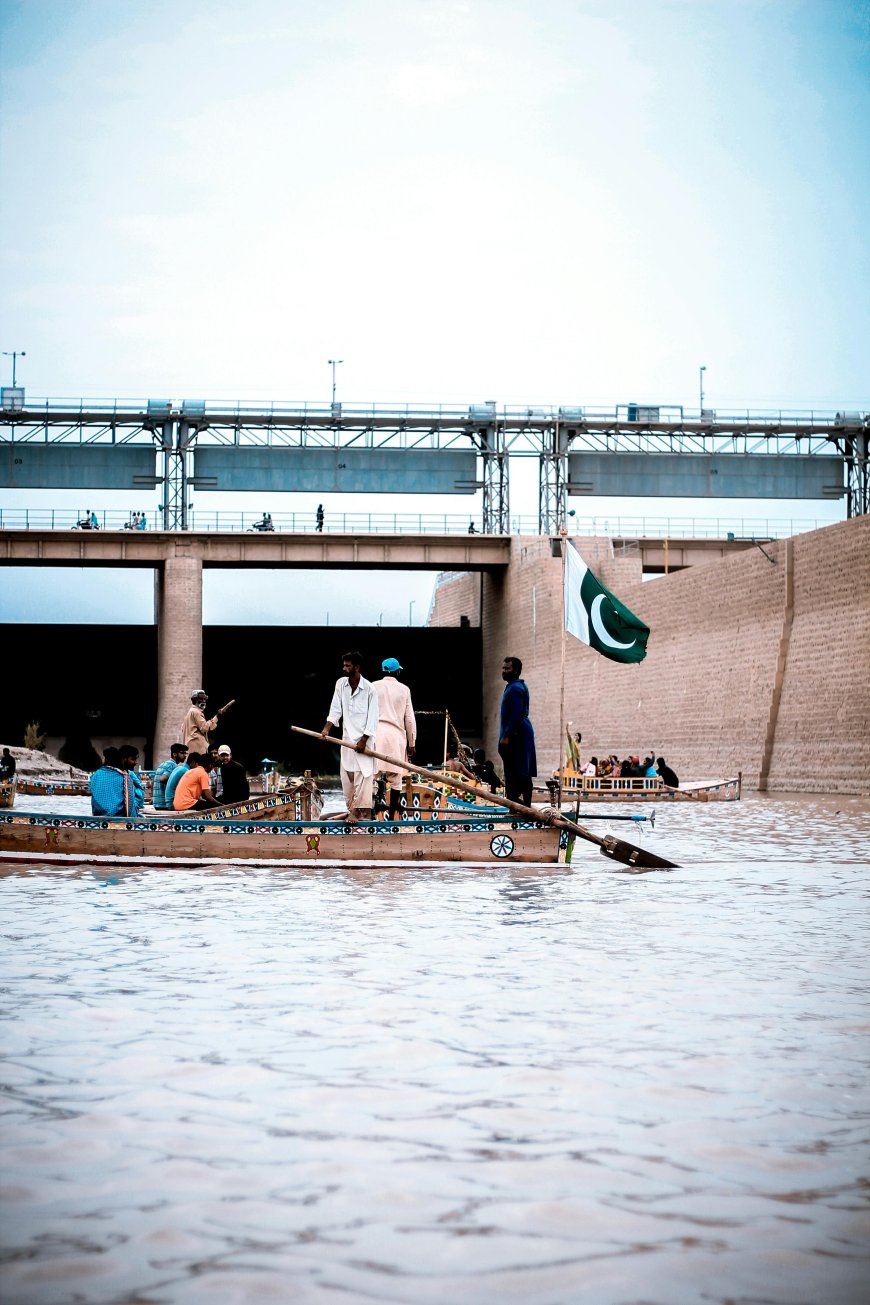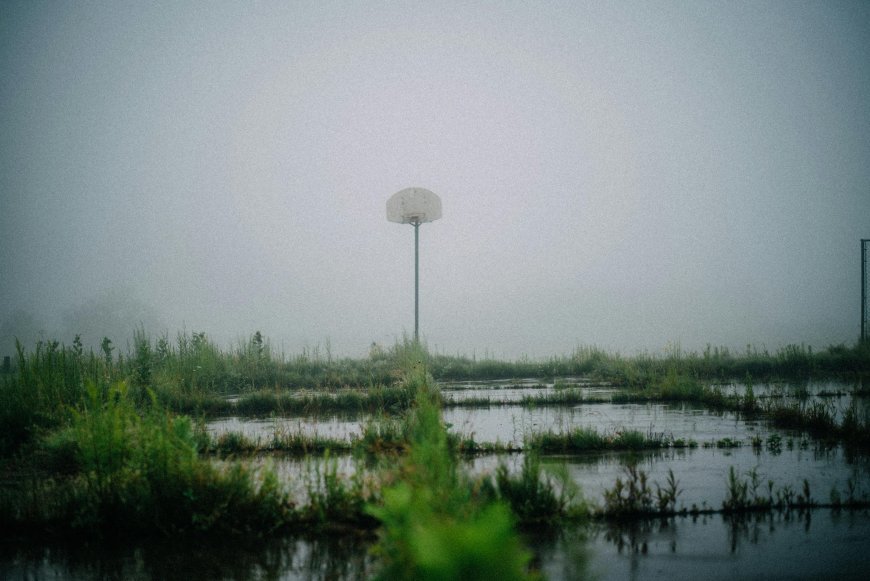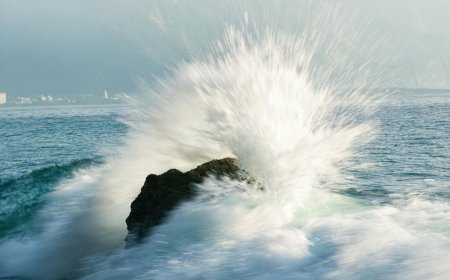Pakistan Floods Kill Hundreds as Villages Vanish Underwater
Deadly floods sweep across northern Pakistan, killing hundreds and displacing thousands as entire villages are submerged.

The water came without warning—swelling rivers burst their banks, torrential rain battered the mountains, and entire neighborhoods vanished beneath the surge. In northern Pakistan, hundreds of lives have been lost and thousands left stranded as catastrophic floods ravage the region.
“It was like the water had no mercy,” said one survivor, watching helplessly as the house he grew up in was carried away by the current. For Pakistan, a country already reeling from past climate disasters, the unfolding tragedy is a haunting reminder of its fragile resilience.
A Disaster of Unimaginable Scale

Officials confirm that hundreds have died in the last several days, with more bodies being recovered as rescue teams reach remote valleys. The full scale of the devastation remains uncertain—roads have been washed away, bridges collapsed, and communication lines severed.
Entire villages in Khyber Pakhtunkhwa and Gilgit-Baltistan have been submerged. Families have been forced to wade through chest-deep waters carrying only what they could hold in their hands: a few clothes, documents, perhaps a cooking pot.
The government has declared a state of emergency in several districts, while the military has been deployed to support relief efforts. Yet with rising waters and heavy rains forecast to continue, officials fear the worst is far from over.
Survivors’ Voices: The Human Toll
Behind the statistics are stories of unimaginable loss. In Swat Valley, a father clutched his young daughter as he described how the torrent ripped through their home. “I shouted to my wife to run,” he said, “but the roof collapsed before she could get out.”
Nearby, children sit wrapped in wet blankets at makeshift shelters, their eyes wide with shock. Aid workers say many of them haven’t eaten a proper meal in days. Schools, mosques, and government buildings have been turned into emergency camps, though space and supplies are critically limited.
For those who lost everything, the question is not only how to survive today, but whether they will ever be able to rebuild.
Why Northern Pakistan Is So Vulnerable
Flooding is not new to Pakistan, but experts warn that climate change has intensified both the scale and frequency of such disasters. Several factors have worsened the crisis:
-
Glacial melt: Pakistan is home to more than 7,000 glaciers, many of which are retreating rapidly due to rising global temperatures. Sudden bursts of meltwater often trigger flash floods in mountain valleys.
-
Monsoon extremes: The seasonal rains that once nourished crops now arrive in violent downpours, overwhelming rivers and infrastructure.
-
Fragile infrastructure: Decades of underinvestment in flood defenses, poor drainage systems, and unchecked urban growth leave communities exposed.
The northern provinces are particularly vulnerable. Their steep terrain funnels water into narrow valleys, where villages are often perched on riverbanks with little protection.

Rescue and Relief Efforts Under Strain
The Pakistani army has deployed helicopters to pluck stranded families from rooftops, while boats ferry supplies into inundated towns. Yet the scale of need dwarfs available resources.
Relief agencies describe shortages of:
-
Clean drinking water
-
Medical supplies for floodborne diseases
-
Food and shelter for displaced families
-
Fuel for transport and rescue operations
Aid workers face immense challenges reaching isolated areas where landslides have blocked access. Many villages remain cut off entirely, with survivors relying on whatever food they managed to save before the floods.
Global Reactions and Calls for Aid
International attention is beginning to focus on Pakistan’s unfolding crisis. World leaders have expressed condolences, while humanitarian organizations are preparing to send emergency support.
For many observers, the disaster underscores the urgent need for climate justice. Pakistan contributes less than 1% of global carbon emissions, yet consistently ranks among the countries most affected by climate-induced catastrophes.
The government has appealed to the global community, emphasizing that rebuilding will require not just short-term relief, but long-term resilience against future disasters.
A Story of Loss and Survival
In one haunting account, a young boy named Imran recounted how he watched his school disappear under swirling brown water. “We were studying in the morning,” he said softly, “and by evening, the classroom was gone.”
His family now sleeps under a tarpaulin stretched across wooden poles. At night, rain seeps through, and the cold mountain wind bites. Still, his mother says they are lucky—they survived. Their neighbors did not.
Such stories capture the brutal randomness of the floods. Some homes stand untouched while others nearby are reduced to rubble. Survival, for many, was a matter of chance.
The Long Road to Recovery
Even once the waters recede, the challenge of rebuilding will be immense. Roads, schools, clinics, and farmlands have been destroyed. The economic toll will stretch for years, affecting food security, livelihoods, and migration patterns.
Experts warn that without significant investment in flood defenses, early warning systems, and climate adaptation, Pakistan will remain trapped in a cycle of destruction and recovery.
For the families who lost everything, recovery is not just about infrastructure—it is about dignity and the hope of reclaiming a sense of normalcy.
Conclusion: A Nation at a Crossroads
The floods sweeping northern Pakistan are not just a natural disaster; they are a stark warning of a climate crisis unfolding in real time. The images of submerged villages, grieving families, and children clinging to scraps of survival are seared into the nation’s memory.
Pakistan now stands at a crossroads. It can continue to absorb one catastrophe after another, or it can push for global solidarity and invest in resilience to protect its people.
For those who have lost loved ones, homes, and communities, one truth is painfully clear: the water showed no mercy.
FAQs
1. How many people have died in the Pakistan floods?
Hundreds have been confirmed dead, though the exact toll is rising as rescue teams reach remote areas.
2. Which areas of Pakistan are worst affected?
Northern regions including Khyber Pakhtunkhwa and Gilgit-Baltistan have seen entire villages submerged.
3. Why does Pakistan face so many floods?
A mix of glacial melt, intense monsoon rains, weak infrastructure, and climate change makes the country highly vulnerable.
4. What help is being provided?
The Pakistani military, local authorities, and international aid groups are providing rescue operations, food, and shelter, though resources are strained.
5. Can future floods be prevented?
They cannot be fully prevented, but investment in flood defenses, early warning systems, and climate adaptation could greatly reduce the impact.
আপনার প্রতিক্রিয়া কী?
 পছন্দ
0
পছন্দ
0
 অপছন্দ
0
অপছন্দ
0
 ভালোবাসা
0
ভালোবাসা
0
 মজার
0
মজার
0
 রাগান্বিত
0
রাগান্বিত
0
 দুঃখজনক
0
দুঃখজনক
0
 বাহ
0
বাহ
0




























































